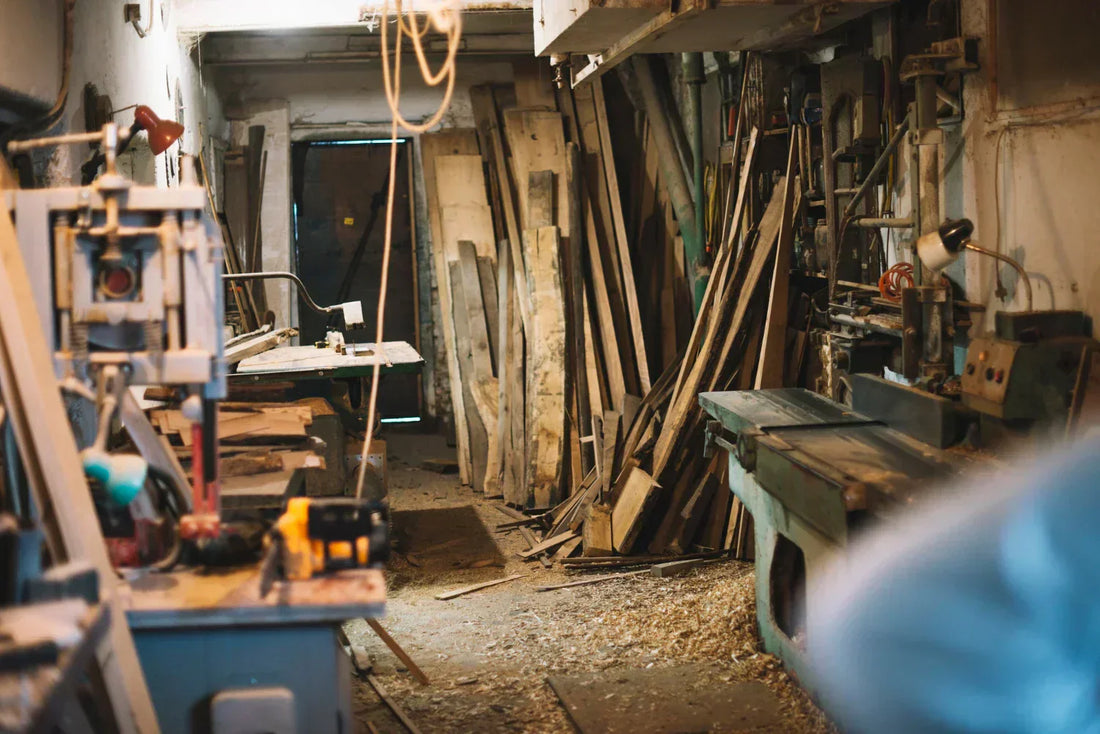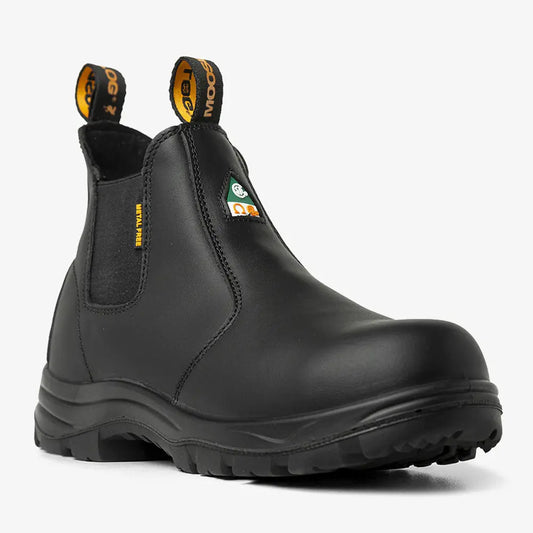
Understanding the Lifespan of Safety Footwear: When to Replace Your Work Boots
If you wear safety boots every day, chances are you’ve asked yourself, how long should work boots last? The answer depends on a few things such as your work environment, the materials used, and how often you’re on your feet. While CSA and ASTM certified boots are designed for protection and durability, no boot lasts forever. Knowing when to replace your work boots is critical for safety, comfort, and jobsite compliance.
How Long Do Safety Boots Typically Last?
On average, high-quality CSA approved work boots last between 6 to 12 months with daily use. For workers in heavy-duty trades like construction, concrete, or utilities, it might be closer to 6 months. Lighter-duty environments such as warehousing or driving could push the lifespan to a year or longer.
But lifespan isn’t just about time. It’s about wear. That’s why it’s important to know what to watch for—especially when it comes to protective features like toe caps, PR plates, and outsoles.
Pro Tip: If your boots look okay but no longer feel supportive, they might still be worn out internally.
What Factors Impact Work Boot Lifespan?
1. Your Work Environment
Jobs that involve oil, concrete, welding sparks, or frequent kneeling will wear out boots faster. High temperatures can dry out leather. Sharp debris can damage outsoles and pierce plates. If you're constantly on rough terrain or exposed to chemicals, your boots take a beating.
2. Material Quality
Full-grain leather and durable rubber outsoles generally last longer than synthetic blends or thin PVC. Uppers made from real leather are more resistant to cracking and abrasion, especially when properly maintained.
3. Construction Method
How your boots are built plays a big role in longevity. Stitched and cemented soles can break down over time, especially with repeated water exposure. MooseLog boots use direct-attached soles, which are injected and bonded directly to the upper without glue. This method creates a watertight seal that holds up in rain, mud, and wet worksites which prevent sole separation over time.
Learn more about Direct-Attached Soles in this blog
4. Foot Sweat and Internal Moisture
Over time, sweat breaks down cushioning materials and encourages bacteria, leading to odour and material fatigue. If your insoles no longer bounce back or the lining feels flat, they’re likely past their prime.
Signs It’s Time to Replace Your Work Boots
Don’t wait until your boots fall apart. Here are clear signs your safety footwear is overdue for retirement:
1. The outsole is worn flat
Slip-resistant treads lose their grip over time. If the pattern is worn down, you're at risk of slipping, especially in oil, snow, or wet floors.
2. The toe cap is exposed or loose
Whether composite, steel, or alloy, a visible or shifting toe cap is a serious hazard and voids CSA/ASTM compliance.
3. The puncture resistant plate is compromised
If you can bend the sole too easily or feel sharp pressure from below, your PR plate may be cracked or displaced. That defeats its purpose.
4. You feel fatigue faster than usual
When midsoles or insoles lose their cushioning rebound, you’ll start feeling it in your knees, heels, and back. Fatigue is a silent sign of boot breakdown.
5. Odour that won’t go away
Persistent odour is a sign that bacteria and moisture have broken down internal linings and foam. If the stink returns even after cleaning, the materials are likely saturated and degraded.
Are Safety Boots Allowed to Expire?
Yes. For industrial jobs in Canada, safety boots must remain CSA compliant. That means if the features wear out or the certifications become unreadable (e.g., green triangle label fades), your employer may not allow them on site.
Some large employers require boot replacement every 12 months, regardless of condition. Others rely on supervisors to inspect boots regularly.
You can also refer to the CSA Z195 standard for workplace footwear. It outlines protective requirements, including impact resistance, compression strength, and puncture protection, all of which diminish over time with real-world use.
Can You Extend the Life of Your Work Boots?
To get the most out of your investment, regular boot maintenance is key:
- Clean after every shift. Use a soft brush to remove debris, and a damp cloth for oil or concrete.
- Dry thoroughly. Let your boots dry naturally overnight. Never place them near a heater.
- Use a boot dryer. Keeps moisture and odour under control.
- Condition leather. Every few weeks, apply a leather conditioner to prevent cracks.
- Rotate if possible. Alternate between two pairs to allow full drying time between uses.
Why Investing in Quality Pays Off
You may spend less upfront on budget boots, but you’ll replace them twice as often and often lose out on critical safety features. Cheap toe caps can crack. Thin soles may wear down in a few months. Foam insoles can flatten in weeks.
With MooseLog safety boots, you’re getting:
- CSA & ASTM Certification for impact, compression, EH, and PR protection
- Direct-attached outsoles that hold up to water, oil, and heat
- Non-metallic BigZone toe caps that meet North American standards
- Dyna-Flex® composite PR plates that protect without added weight
- Durable leather uppers that resist abrasions and moisture
All this while delivering next-level comfort. That is what we have always stood for.
Final Tip: Don’t Wait Until It’s Too Late
Worn-out work boots can be a real safety hazard. Puncture risks, reduced traction, electrical hazards, and fatigue all become real threats once your boots pass their expiration point. Whether you’re working in warehousing, logistics, trades, or agriculture, your safety gear needs to be as dependable as you are.
If it’s time for a replacement, choose a pair built for the long haul. MooseLog boots are CSA and ASTM certified, built with heavy-duty materials, and trusted by Canadian crews nationwide.






